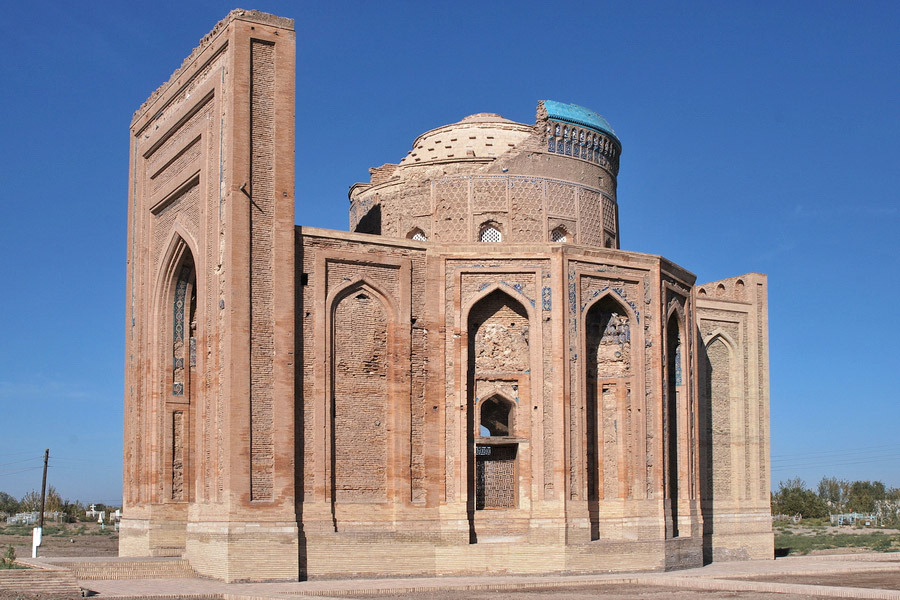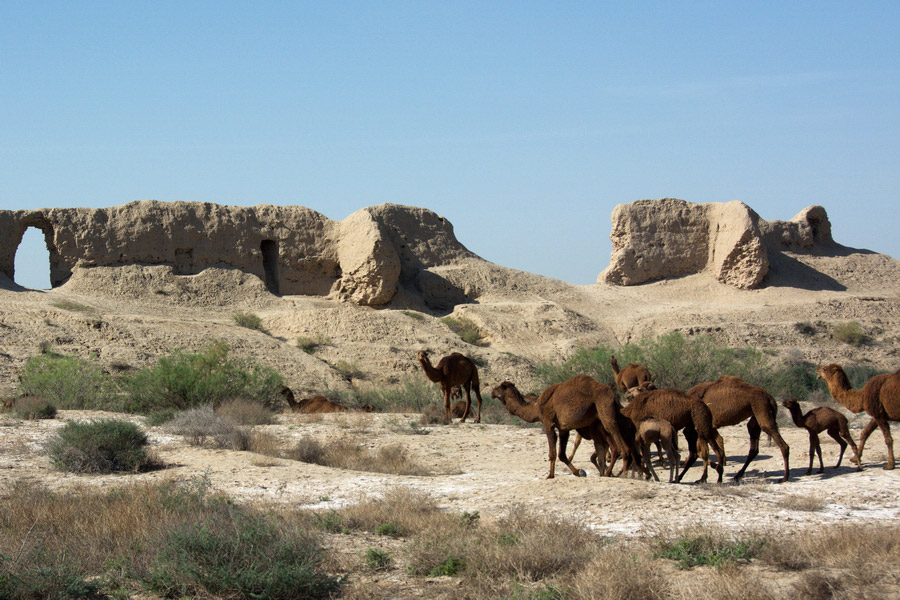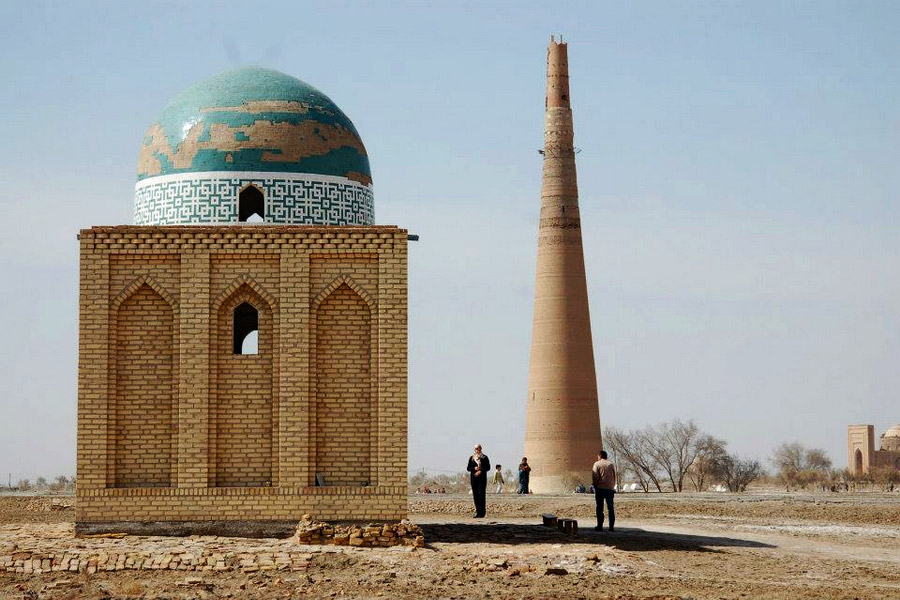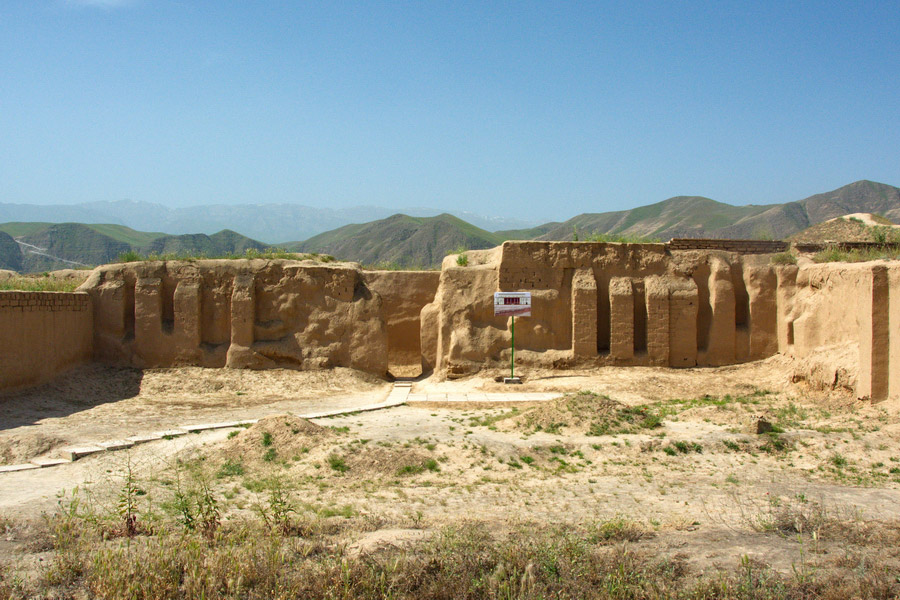
UNESCO and Turkmenistan
Turkmenistan became a UNESCO member in 1993, and the country established its National Commission for UNESCO in 1997. In 2022, Ashgabat saw the opening of its first UNESCO Club, "Languages of the World." Today, Turkmenistan actively collaborates with the UN on scientific, educational, and historical projects.
Turkmenistan's UNESCO World Heritage Sites
Five sites from Turkmenistan have been inscribed on the World Heritage List:
- The State Historical and Cultural Park "Ancient Merv" (inscribed in 1999);
- Ancient City of Kunya-Urgench (inscribed in 2005);
- Parthian Fortresses of Nisa (inscribed in 2007),
- Turanian Deserts in the Temperate Region (included in 2023)
- Zarafshan-Karakum Corridor (since 2023)
The State Historical and Cultural Park "Ancient Merv"

Merv is not only the oldest city in Turkmenistan but also in the entire Central Asia. The city existed as far back as the 3rd millennium BC. Researchers have discovered evidence indicating that Merv was home to one of the oldest agricultural centers in the Central Asian region. During the Middle Ages, Merv's population reached half a million people, surpassing the populations of Constantinople and Baghdad at the time. However, by the 19th century, the city was destroyed.
Today, the entire park, which encompasses the ancient settlements surrounding Merv, is of interest. The historical center, in particular, is filled with attractions. Here, you can find partly destroyed sites such as Erk-Kala, Sultan-Kala, Gyaur-Kala, Bayramalihan-Kala, and Abdullakhan-Kala, as well as early medieval mausoleums, citadels, towers, mosques, and much more.
The mausoleum of Sultan Sanjar, built in the early 12th century and having survived the Mongol invasion, is especially noteworthy. Its skillful mural paintings, intricately carved stucco, and unique masonry make this building one of the most remarkable architectural structures of its time.
Ancient Merv is also historically significant because, in the 3rd century, Christians arrived, and the Merv metropolitan church was established, becoming the first in the Central Asian region.
The Ancient City of Kunya-Urgench

Kunya Urgench was first mentioned in written sources in the 3rd century BC and is also referenced in the Zoroastrian book "Avesta" (where it is called Urva). Most of the preserved monuments date back to the 11th to 16th centuries, but there is also pre-Islamic period architecture. All the significant attractions of the city are concentrated in the historical area: the gate of the ancient caravanserai, the tallest minaret in Central Asia, Kutlug Timur, the mausoleum of Tyurabek Khanim, the Kyrk-Molla fortress, and about a dozen medieval mausoleums. Each architectural monument highlights the diversity of Muslim architecture.
The Academy of Mamun was once located here, where scholars like Beruni and Ibn Sina (Avicenna) worked. In the 10th century, this academy was renowned throughout the eastern world for its scientific research in mathematics, astronomy, history, and medicine. Notably, a hospital was established in Kunya-Urgench at the beginning of the 14th century. Additionally, at the start of the 13th century, the city held the status of being the heart of the Muslim religion.
Parthian Fortresses of Nisa

This World Heritage Site encompasses the fortresses of Old and New Nisa. For five centuries, Nisa served as the capital of the Parthian Empire, one of the most powerful civilizations that rivaled Rome for supremacy. As a result, in the 4th century BC, the Parthians became part of Alexandropolis, founded by Alexander the Great. Due to its location at the crossroads of trade routes, Nisa is home to the remains of state and religious buildings and artifacts, which bear witness to the interaction between Central Asian and Mediterranean cultures. Archaeological excavations continue at these fortresses to this day. For instance, human settlements dating back to the 4th millennium BC have been discovered here, and researchers believe that there is still much more to uncover.
Turanian Deserts in the Temperate Region
The Turanian Deserts, spanning across Turkmenistan, Uzbekistan, and Kazakhstan, are a UNESCO World Heritage Site known for their extreme climate—scorchingly hot summers and equally freezing winters. Despite these harsh conditions, the deserts boast a rich biodiversity, with numerous animal and plant species uniquely adapted to survive in such an environment.
Zarafshan-Karakum Corridor
As for the Zarafshan-Karakum corridor, it served as a vital lifeline of the Great Silk Road, situated in the heart of Central Asia. This corridor was the starting point for myriad trade routes that extended into the modern-day territories of Turkmenistan, Tajikistan, and Uzbekistan. For 18 centuries, this network played a pivotal role in connecting Central Asia with the wider world. It was a hub where diplomatic ties were forged, cultures intermingled, and new advances in science and technology emerged.
- Dehistan (added in 1998): Also known as Mashad-Misrian, this city was founded between the 9th and 8th centuries BC and remained a key city in western Turkmenistan until the 14th century. Significant remaining structures include an early medieval minaret, the 18-meter section of the Mosque of Muhammad Khorezmshakh, the Mosque and Mausoleum of Shir Sabir, and 5,000-year-old monuments.
- Khazar State Nature Reserve (added in 2009): The reserve consists of the Esenguly section and Ogurchin reserve, which host a diverse bird population.
- Amudarya State Nature Reserve (added in 2009): Divided into three sections—tugai, hills and barchans, and salt marshes—this reserve is home to various species of animals, birds, and fish.
- Repetek Biosphere State Reserve (added in 2009): Located in the southeast of the Karakum Desert, this reserve features sand dunes and several species of trees, shrubs, fungi, and algae. It also serves as a refuge for endangered animal and bird species.
- Dinosaurs and Caves of Koytendag (added in 2009): This mountainous area encompasses five nature reserves where fossilized traces of dinosaurs, ancient mollusks, and other artifacts have been discovered. The caves in Koytendag are unique geological formations with no known equivalents in Eurasia.
- Syunt-Hasardag Reserve (added in 2009): Despite its arid climate, this reserve preserves remnants of broad-leaved forests, fruit and nut trees, legumes, and cereals. It is home to unique almond, pomegranate, and fig varieties.
- Badkhyz State Nature Reserve (added in 2009): The reserve includes a plateau, hilly ridges, desert steppe, salt lake, and gorges. Known for its beauty, it is home to rare mammals, such as the kulan (wild ass), Persian leopard, kingfisher, Afghan urial, and others.
- Great Silk Road Sites in Turkmenistan (added in 2010): This includes important monuments along 11 routes, such as Merv, Khorezm, Herat, Amul, Serakhs, Abiverd, Nisa, and Dehistan.
Turkmenistan is renowned for its ancient architecture, offering a unique window into Eastern history. Ancient Merv, Kunya-Urgench, and the Parthian fortresses of Nisa are treasures for history and archaeology enthusiasts. Sites on UNESCO's tentative list are equally significant. To truly immerse yourself in the exploration of a new culture, we recommend visiting the Zarafshan-Karakum Corridor of the Great Silk Road, the Koytendag Caves, and Dehistan.
Discover more about Turkmenistan's intangible UNESCO World Heritage Sites.

